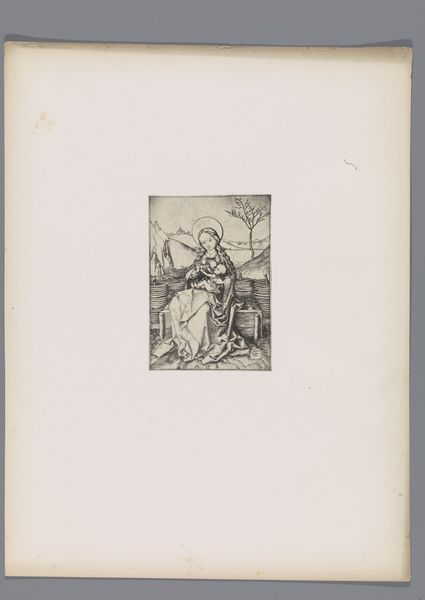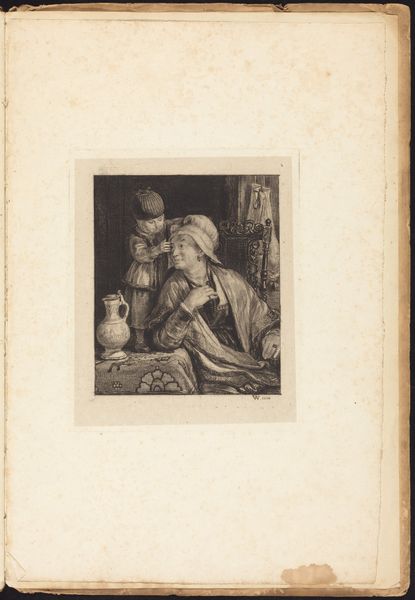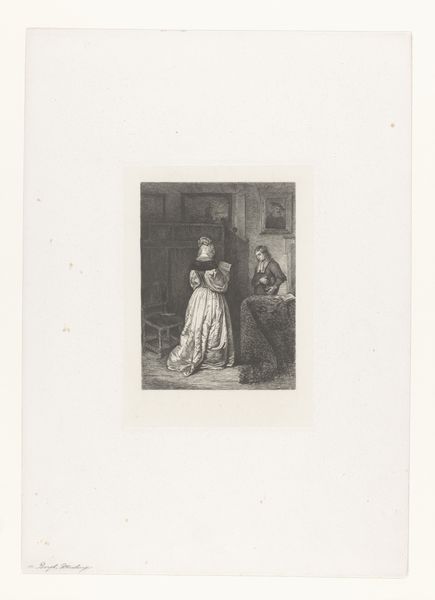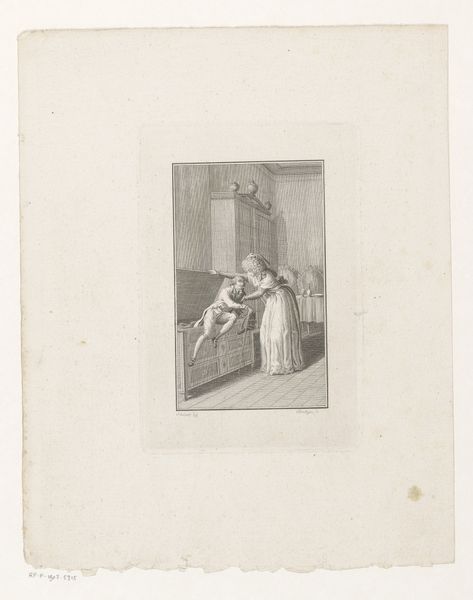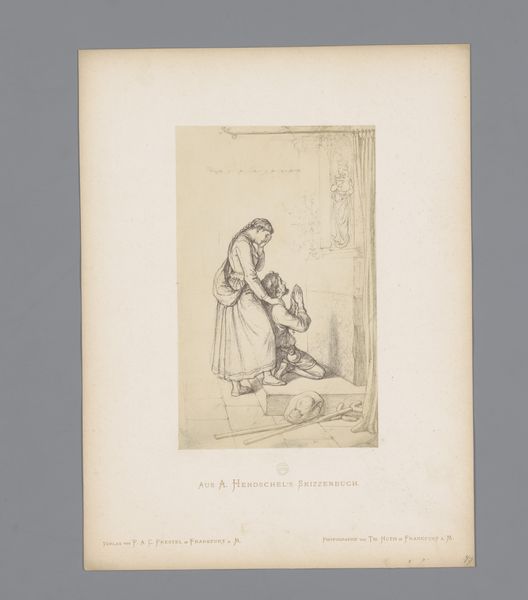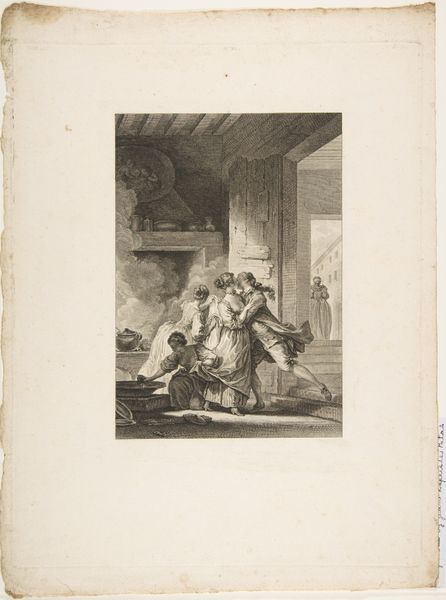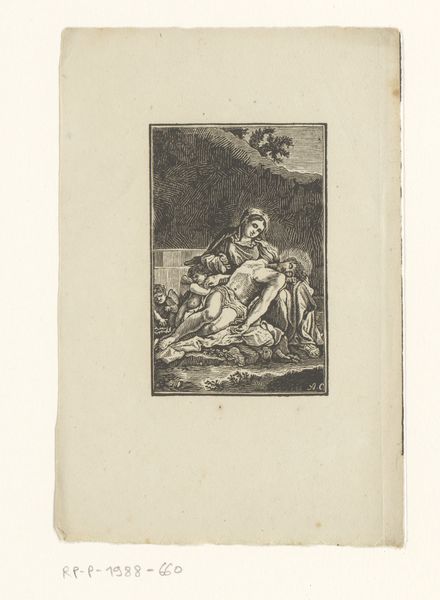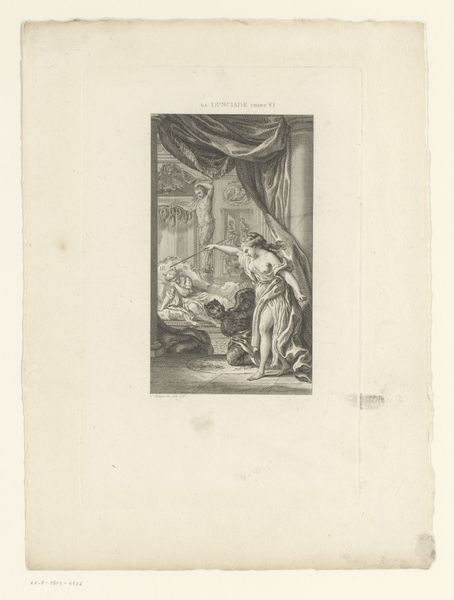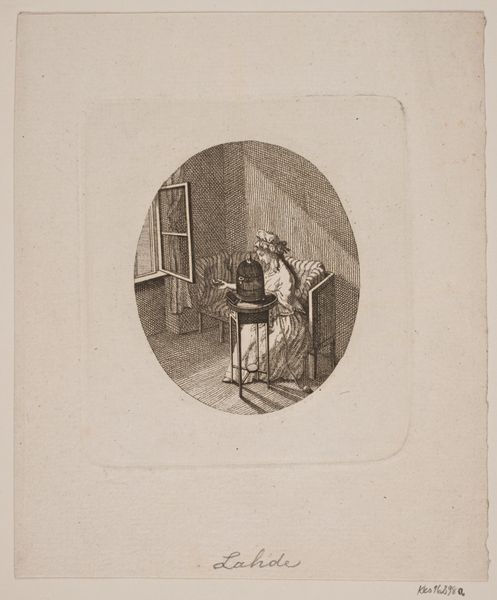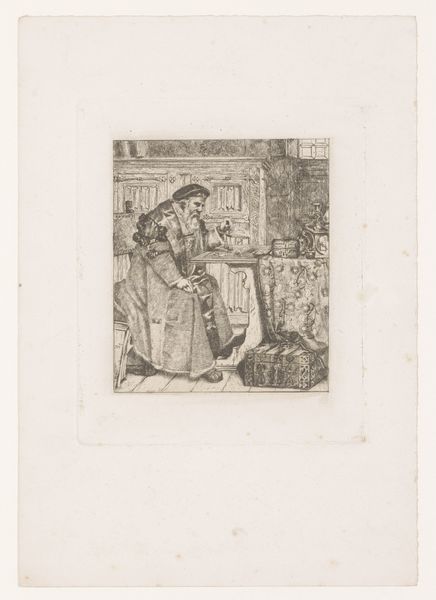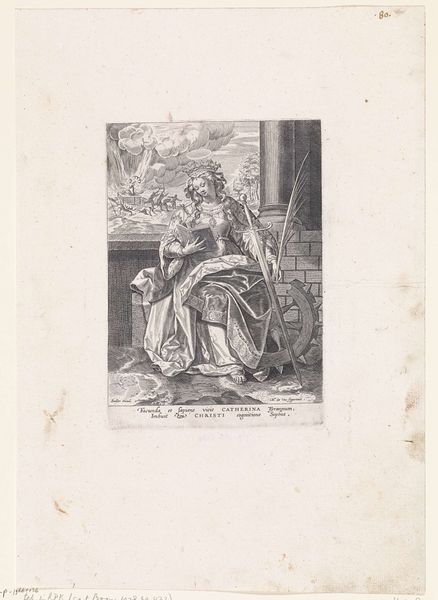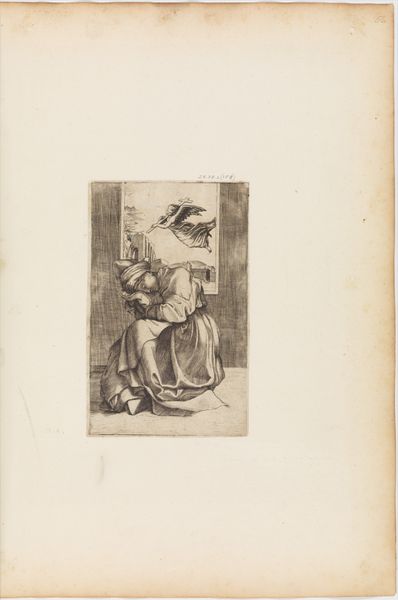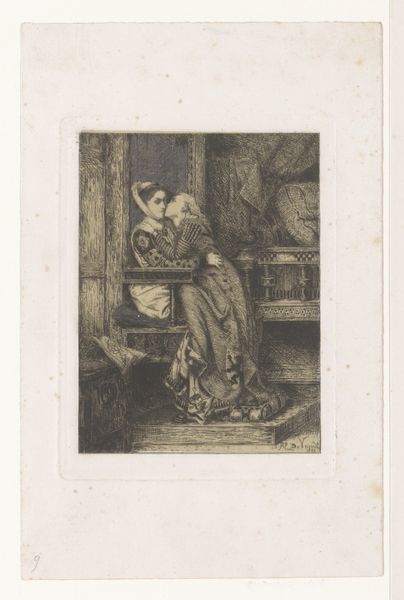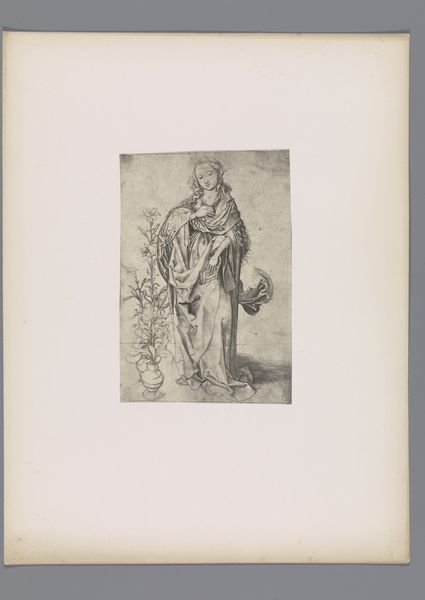
Reproductie van een prent van Maria met Christus als kind en een boek door Martin Schongauer before 1872
0:00
0:00
drawing, print, paper, ink, engraving
#
portrait
#
drawing
#
ink paper printed
# print
#
figuration
#
paper
#
11_renaissance
#
ink
#
italian-renaissance
#
engraving
Dimensions: height 140 mm, width 107 mm
Copyright: Rijks Museum: Open Domain
Editor: Here we have a reproduction of a print, “Maria with Christ as a Child and a Book” by Martin Schongauer, created before 1872. It's ink on paper and the detail is quite striking considering its age and the print medium. How can we understand this artwork today? Curator: Let’s consider this "reproduction." What does it mean for a work like this to exist as a copy? It shifts our focus from Schongauer's original labor to the labor involved in its reproduction. The printing process, the ink, the paper – these are all industrial materials, subjects of manufacture. How does this reproduction alter the "aura," the perceived uniqueness, of the original artwork? Editor: So you’re suggesting the copy, because of its industrial nature, demystifies the original artistic creation? Curator: Precisely. We see the layering of processes - the artist’s hand in the original engraving and the mechanical reproduction allowing widespread circulation. Consider the social context: how would the availability of such prints shape religious devotion, artistic knowledge, and, crucially, patterns of consumption in its time? Were these affordable reproductions meant to replace access to more exclusive images? Editor: It is interesting how the reproduction changes the context and perhaps even democratizes access while simultaneously highlighting the mechanics of its creation. It prompts one to think of artistic labour and its many layers. Curator: Exactly. By focusing on the materials and methods of production, we gain insights beyond the simple iconography. We start to see the networks of labor and consumption inherent in even religious imagery. What do you take away from analyzing it this way? Editor: This approach highlights the interplay between artistic skill and industrial production, making me appreciate not just the image but also its material and economic history. Curator: Indeed, analyzing the work through the lens of materiality and production processes adds another dimension of understanding, wouldn't you say?
Comments
No comments
Be the first to comment and join the conversation on the ultimate creative platform.
